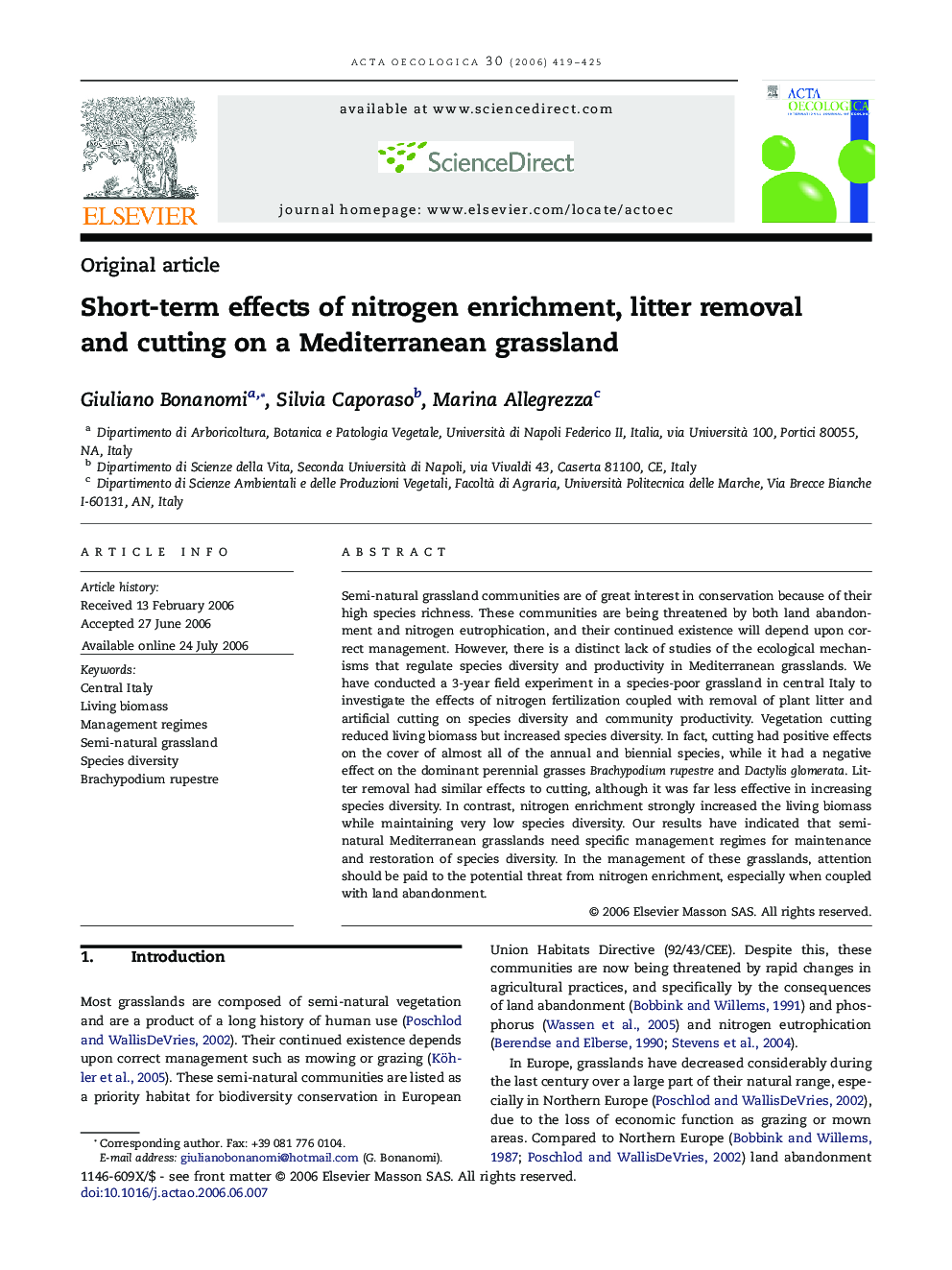| Article ID | Journal | Published Year | Pages | File Type |
|---|---|---|---|---|
| 4381720 | Acta Oecologica | 2006 | 7 Pages |
Abstract
Semi-natural grassland communities are of great interest in conservation because of their high species richness. These communities are being threatened by both land abandonment and nitrogen eutrophication, and their continued existence will depend upon correct management. However, there is a distinct lack of studies of the ecological mechanisms that regulate species diversity and productivity in Mediterranean grasslands. We have conducted a 3-year field experiment in a species-poor grassland in central Italy to investigate the effects of nitrogen fertilization coupled with removal of plant litter and artificial cutting on species diversity and community productivity. Vegetation cutting reduced living biomass but increased species diversity. In fact, cutting had positive effects on the cover of almost all of the annual and biennial species, while it had a negative effect on the dominant perennial grasses Brachypodium rupestre and Dactylis glomerata. Litter removal had similar effects to cutting, although it was far less effective in increasing species diversity. In contrast, nitrogen enrichment strongly increased the living biomass while maintaining very low species diversity. Our results have indicated that semi-natural Mediterranean grasslands need specific management regimes for maintenance and restoration of species diversity. In the management of these grasslands, attention should be paid to the potential threat from nitrogen enrichment, especially when coupled with land abandonment.
Related Topics
Life Sciences
Agricultural and Biological Sciences
Ecology, Evolution, Behavior and Systematics
Authors
Giuliano Bonanomi, Silvia Caporaso, Marina Allegrezza,
